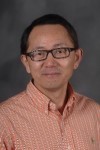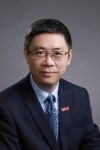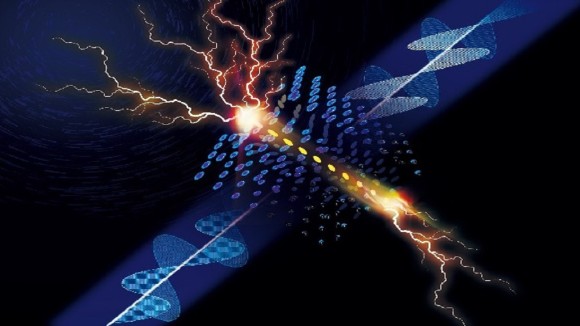 Shin-Tson Wu is a Pegasus professor at College of Optics and Photonics, University of Central Florida. Prior to joining UCF in 2001, he was with Hughes Research Laboratories where the first laser was invented. He received his Ph.D. in physics from University of Southern California. His research at UCF focuses on three areas: 1) Advanced displays, including mini-LED, micro-LED, quantum-dot LCD, and augmented reality and virtual reality displays, 2) Adaptive optics for laser beam steering and foveated imaging, and 3) Adaptive lens, such as tunable/switchable focus liquid crystal and liquid lenses. Prof. Wu is the recipient of OSA Esther Hoffman Beller medal (2014), SID Slottow-Owaki prize (2011), OSA Joseph Fraunhofer award (2010), SPIE G. G. Stokes award (2008), and SID Jan Rajchman prize (2008). In 2014, he was inducted to the inaugural Florida Inventors Hall of Fame. He is a Charter Fellow of the National Academy of Inventors, and a Fellow of the IEEE, OSA, SID, and SPIE. Dr. Wu has co-authored 7 books, 640 journal papers, 300 conference papers, and obtained 192 patents including 93 U.S. patents. His publications have accumulated 40,000 citations with an h-index of 94. In the past, he served as founding Editor-In-Chief of the IEEE/OSA Journal of Display Technology, OSA Publications Council Chair, OSA Board of Directors, and SID honors and awards committee chair.
Shin-Tson Wu is a Pegasus professor at College of Optics and Photonics, University of Central Florida. Prior to joining UCF in 2001, he was with Hughes Research Laboratories where the first laser was invented. He received his Ph.D. in physics from University of Southern California. His research at UCF focuses on three areas: 1) Advanced displays, including mini-LED, micro-LED, quantum-dot LCD, and augmented reality and virtual reality displays, 2) Adaptive optics for laser beam steering and foveated imaging, and 3) Adaptive lens, such as tunable/switchable focus liquid crystal and liquid lenses. Prof. Wu is the recipient of OSA Esther Hoffman Beller medal (2014), SID Slottow-Owaki prize (2011), OSA Joseph Fraunhofer award (2010), SPIE G. G. Stokes award (2008), and SID Jan Rajchman prize (2008). In 2014, he was inducted to the inaugural Florida Inventors Hall of Fame. He is a Charter Fellow of the National Academy of Inventors, and a Fellow of the IEEE, OSA, SID, and SPIE. Dr. Wu has co-authored 7 books, 640 journal papers, 300 conference papers, and obtained 192 patents including 93 U.S. patents. His publications have accumulated 40,000 citations with an h-index of 94. In the past, he served as founding Editor-In-Chief of the IEEE/OSA Journal of Display Technology, OSA Publications Council Chair, OSA Board of Directors, and SID honors and awards committee chair.
 Quan Li is Distinguished Chair Professor and Director of Institute of Advanced Materials at Southeast University. He held appointments in USA, Germany, and France. Li received his Ph.D. in Organic Chemistry from the Chinese Academy of Sciences (CAS), where he was promoted to a youngest Full Professor of Organic Chemistry and Medicinal Chemistry in February 1998. He is a Fellow of the Royal Society of Chemistry (FRSC). He has been elected as a member of the European Academy of Sciences and a member of European Academy of Sciences and Arts. He has also been honored as Professor and Chair Professor at several universities. In the past ten years, he has edited eight books (2 Wiley-VCH, 2 Wiley, and 4 Springer books), and has co-authored 40 chapters including the invited author of the entry entitled “Liquid Crystals” in the prestigious Kirk-Othmer Encyclopedia. He has been listed among the world’s top 2% scientists by Stanford University. Li’s current research interest spans from stimuli-responsive smart soft matter, advanced photonics, and optoelectronic materials for energy harvesting and energy saving to functional biocompatible materials and nanoparticles to nanoengineering and device fabrication.
Quan Li is Distinguished Chair Professor and Director of Institute of Advanced Materials at Southeast University. He held appointments in USA, Germany, and France. Li received his Ph.D. in Organic Chemistry from the Chinese Academy of Sciences (CAS), where he was promoted to a youngest Full Professor of Organic Chemistry and Medicinal Chemistry in February 1998. He is a Fellow of the Royal Society of Chemistry (FRSC). He has been elected as a member of the European Academy of Sciences and a member of European Academy of Sciences and Arts. He has also been honored as Professor and Chair Professor at several universities. In the past ten years, he has edited eight books (2 Wiley-VCH, 2 Wiley, and 4 Springer books), and has co-authored 40 chapters including the invited author of the entry entitled “Liquid Crystals” in the prestigious Kirk-Othmer Encyclopedia. He has been listed among the world’s top 2% scientists by Stanford University. Li’s current research interest spans from stimuli-responsive smart soft matter, advanced photonics, and optoelectronic materials for energy harvesting and energy saving to functional biocompatible materials and nanoparticles to nanoengineering and device fabrication.
 Yan-qing Lu received both his BS and Ph.D. degrees from Physics department, Nanjing University, China, in 1991 and 1996 respectively. Then he joined the department of materials sciences and engineering, Nanjing University as a lecture (1996) and associate professor (1998). He has worked in Academia and Industry in the United States from 2000 to 2006, where he developed a serial of liquid crystal based fiber-optic devices with his colleagues in Chorum Tech., CREOL, UCF and EZconn. Corp. He is currently a Changjiang distinguished professor at Nanjing University and a Fellow of OSA (Optical Society of America), Fellow of COS (Chinese Optical Society). He currently serves as the director of Chinese Liquid Crystal Society, the executive editor-in-chief for Chinese Optics Letters and the vice editor-in-chief for Chinese Journal of Liquid Crystal and Display. His research interests include liquid crystal photonics, fiber optics and nonlinear optics. He is the author or co-author of over 250 peer-reviewed papers in Science, Sci. Adv., Nature Comm., PRL, Adv. Mater., Light Sci. Appl., Optica, etc. with over 6000 citations. He also holds more than 50 domestic or international patents or pending patents.
Yan-qing Lu received both his BS and Ph.D. degrees from Physics department, Nanjing University, China, in 1991 and 1996 respectively. Then he joined the department of materials sciences and engineering, Nanjing University as a lecture (1996) and associate professor (1998). He has worked in Academia and Industry in the United States from 2000 to 2006, where he developed a serial of liquid crystal based fiber-optic devices with his colleagues in Chorum Tech., CREOL, UCF and EZconn. Corp. He is currently a Changjiang distinguished professor at Nanjing University and a Fellow of OSA (Optical Society of America), Fellow of COS (Chinese Optical Society). He currently serves as the director of Chinese Liquid Crystal Society, the executive editor-in-chief for Chinese Optics Letters and the vice editor-in-chief for Chinese Journal of Liquid Crystal and Display. His research interests include liquid crystal photonics, fiber optics and nonlinear optics. He is the author or co-author of over 250 peer-reviewed papers in Science, Sci. Adv., Nature Comm., PRL, Adv. Mater., Light Sci. Appl., Optica, etc. with over 6000 citations. He also holds more than 50 domestic or international patents or pending patents.

